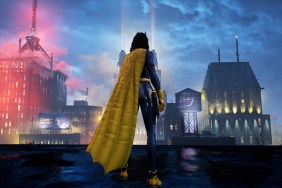She-nobi?
Some have said of life that its essence is aqueous and so subtle in its subservience to form and rules as to be like water in a jar. Used to the shape imposed on our lives by habit and convention, we almost forget what change means until some shocking revelation shatters yesterday’s shot-glass and replaces it with the stein of new frontiers.
…
-
Insane, intense action
-
Terrific boss battles
-
Smooth, fast and hard
-
Which might be too much for some
-
Cheap deaths
-
Bad level design and too few enemy types











